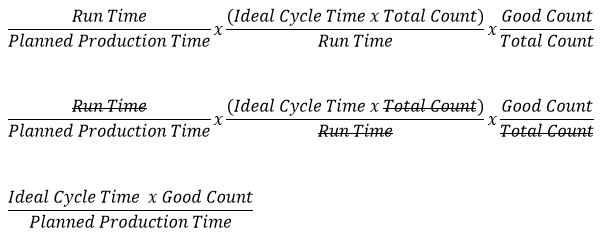I learn OEE for many years. But I have a feeling it is inconsistent to the concept of Kaizen – continuous improvement. By studying more about lean, I am more convinced that it is a working philosophy. When anything is described as philosophical, that thing must be subject to tons of question of why. I have already been accustomed to ask why to the daily things I come across.
Let’s start with concept of Kaizen. When we talk about continuous improvement, the target must be idealistic enough; otherwise, it would not be justified never-ending progress. The pleasure is not by achieving the target; rather, it is enjoyment of process – today is better than yesterday, hopefully, tomorrow is better than today. This is the critical point – just like claiming 0-accident, 0-defect and 100% attainment. It is too perfect to claim these but the pleasure of work is to getting close to the idealistic target and maintaining it. The way of getting pleasure is a matter of art. Agree?
Then let’s revisit OEE. The traditional OEE formula is as follows:
OEE = Availability x Performance x Quality
Availability = Run Time / Planned Production Time
Performance = (Ideal Cycle Time × Total Count) / Run Time
Quality = Good Count / Total Count

If there exists issue with the formula, what would it be? (pre-mortem analysis)
Ideal Cycle Time looks fine. But if there exist even more idealistic cycle time, what would it affect the OEE?
Good Count is fine. There should not be any argument.
But what is Planned Production Time? 1 day has 24 hours. If the factory only operates 1 shift, says, 9 hours, 1 hour for lunch, therefore only 8 hours operation. On every day, when the equipment start to operate, it needs 0.5 hours to daily maintenance and perparation, therefore, the planned production time will be 7.5 hours. This will be the denominator. Assume that ideal cycle time is 0.01 hours and the good count is 700 pcs => OEE: 700 x 0.01 / 7.5 = 93.3%.
Assume that we only work 6 days a week and the demand per week is 9,000 pcs. Since 93.3% of OEE is almost meaning full capacity (extrapolate to 6 days a week, again Sunday is planned non-production time), we will need 9,000 pcs / 6 days / 700 pcs = 2.14 pcs of equipment. I can be 100% sure if you submit this calculation in the application of 3 machines in total, you will definitely get FIRED! Why?
Why not operate the machines for 2 shift?
Why not operate 7 days a week?
Why do we constraint the target to some human thinking constraint?
If I relax the planned production time to 24 hours, the OEE will be 700 pcs * 0.01 hours / 24 hours = 29%. We have 71% of down time. The down time analysis will be 2% for maintenance & preparation. The avoidable down time will be 69% – 4% for lunch (but why not use back up person for lunch time), 65% for completely no reason.
When we operate 24 hours or 3 shift, therefore we can produce 700pcs * 3 = 2,100; operate 7 days a week, our output will be 2,100pcs * 7 = 14,700pcs. We do not need to buy 3, rather, only 1.
The OEE is only 9,000pcs * 0.01 hours / (24hours * 7 days) => 90 hours / 168 hours => 53%. The down time analysis is 2 hours preparation & maintenance, 2.4%.
Then what OEE definition would you prefer for evaluation of performance and utilization rate?
Chase the excellence, success will follow. Cheers!






